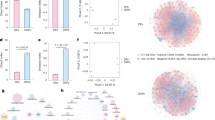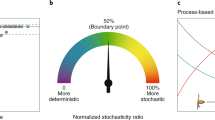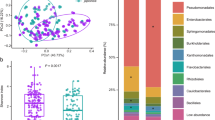Abstract
Current disease resistance breeding, which is largely dependent on the exploitation of resistance genes in host plants, faces the serious challenges of rapidly evolving phytopathogens. The phyllosphere is the largest biological surface on Earth and an untapped reservoir of functional microbiomes. The phyllosphere microbiome has the potential to defend against plant diseases. However, the mechanisms of how the microbiota assemble and function in the phyllosphere remain largely elusive, and this restricts the exploitation of the targeted beneficial microbes in the field. Here we review the endogenous and exogenous cues impacting microbiota assembly in the phyllosphere and how the phyllosphere microbiota in turn facilitate the disease resistance of host plants. We further construct a holistic framework by integrating of holo-omics, genetic manipulation, culture-dependent characterization and emerging artificial intelligence techniques, such as deep learning, to engineer the phyllosphere microbiome for sustainable crop production.
This is a preview of subscription content, access via your institution
Access options
Access Nature and 54 other Nature Portfolio journals
Get Nature+, our best-value online-access subscription
$29.99 / 30 days
cancel any time
Subscribe to this journal
Receive 12 digital issues and online access to articles
$119.00 per year
only $9.92 per issue
Buy this article
- Purchase on Springer Link
- Instant access to full article PDF
Prices may be subject to local taxes which are calculated during checkout




Similar content being viewed by others
References
Koskella, B. The phyllosphere. Curr. Biol. 30, R1143–R1146 (2020).
Lu, N. et al. Improved estimation of aboveground biomass in wheat from RGB imagery and point cloud data acquired with a low-cost unmanned aerial vehicle system. Plant Methods 15, 17 (2019).
Arye, G. C. & Harel, A. in Microbial Genomics in Sustainable Agroecosystems (eds Tripathi, V. et al.) 39–65 (Springer, 2020).
Universal plant healthcare. Nat. Plants 6, 47 (2020).
Fones, H. N. et al. Threats to global food security from emerging fungal and oomycete crop pathogens. Nat. Food 1, 332–342 (2020).
Li, W., Deng, Y., Ning, Y., He, Z. & Wang, G. L. Exploiting broad-spectrum disease resistance in crops: from molecular dissection to breeding. Annu. Rev. Plant Biol. 71, 575–603 (2020).
Matsumoto, H. et al. Bacterial seed endophyte shapes disease resistance in rice. Nat. Plants 7, 60–72 (2021).
Thomazella, D. P. T. et al. Loss of function of a DMR6 ortholog in tomato confers broad-spectrum disease resistance. Proc. Natl Acad. Sci. USA 118, e2026152118 (2021).
Guo, Y. Molecular design for rice breeding. Nat. Food 2, 849–849 (2021).
Toju, H. et al. Core microbiomes for sustainable agroecosystems. Nat. Plants 4, 247–257 (2018).
Berg, G. et al. Microbiome definition re-visited: old concepts and new challenges. Microbiome 8, 103 (2020).
Carrion, V. J. et al. Pathogen-induced activation of disease-suppressive functions in the endophytic root microbiome. Science 366, 606–612 (2019).
Chialva, M., Lanfranco, L. & Bonfante, P. The plant microbiota: composition, functions, and engineering. Curr. Opin. Biotechnol. 73, 135–142 (2021).
Liu, H., Brettell, L. E. & Singh, B. Linking the phyllosphere microbiome to plant health. Trends Plant Sci. 25, 841–844 (2020).
Vorholt, J. A. Microbial life in the phyllosphere. Nat. Rev. Microbiol. 10, 828–840 (2012).
Liu, H., Brettell, L. E., Qiu, Z. & Singh, B. K. Microbiome-mediated stress resistance in plants. Trends Plant Sci. 25, 733–743 (2020).
Xu, P. et al. Temporal metabolite responsiveness of microbiota in the tea plant phyllosphere promotes continuous suppression of fungal pathogens. J. Adv. Res. 39, 49–60 (2021).
Wang, M. & Cernava, T. Overhauling the assessment of agrochemical-driven interferences with microbial communities for improved global ecosystem integrity. Environ. Sci. Ecotechnol. 4, 100061 (2020).
Hegazi, N., Hartmann, A. & Ruppel, S. The plant microbiome: exploration of plant–microbe interactions for improving agricultural productivity. J. Adv. Res. 19, 1–2 (2019).
Mittelviefhaus, M., Muller, D. B., Zambelli, T. & Vorholt, J. A. A modular atomic force microscopy approach reveals a large range of hydrophobic adhesion forces among bacterial members of the leaf microbiota. ISME J. 13, 1878–1882 (2019).
Sapkota, R., Knorr, K., Jorgensen, L. N., O’Hanlon, K. A. & Nicolaisen, M. Host genotype is an important determinant of the cereal phyllosphere mycobiome. New Phytol. 207, 1134–1144 (2015).
Bodenhausen, N., Bortfeld-Miller, M., Ackermann, M. & Vorholt, J. A. A synthetic community approach reveals plant genotypes affecting the phyllosphere microbiota. PLoS Genet. 10, e1004283 (2014).
Horton, M. W. et al. Genome-wide association study of Arabidopsis thaliana leaf microbial community. Nat. Commun. 5, 5320 (2014).
Wagner, M. R. et al. Host genotype and age shape the leaf and root microbiomes of a wild perennial plant. Nat. Commun. 7, 12151 (2016).
Shakir, S., Zaidi, S. S., de Vries, F. T. & Mansoor, S. Plant genetic networks shaping phyllosphere microbial community. Trends Genet. 37, 306–316 (2021).
Xiong, C. et al. Plant developmental stage drives the differentiation in ecological role of the maize microbiome. Microbiome 9, 171 (2021).
Laforest-Lapointe, I., Paquette, A., Messier, C. & Kembel, S. W. Leaf bacterial diversity mediates plant diversity and ecosystem function relationships. Nature 546, 145–147 (2017).
Chen, T. et al. A plant genetic network for preventing dysbiosis in the phyllosphere. Nature 580, 653–657 (2020).
Pang, Z. et al. Linking plant secondary metabolites and plant microbiomes: a review. Front. Plant Sci. 12, 621276 (2021).
Pfeilmeier, S. et al. The plant NADPH oxidase RBOHD is required for microbiota homeostasis in leaves. Nat. Microbiol. 6, 852–864 (2021).
Gupta, R. et al. Cytokinin drives assembly of the phyllosphere microbiome and promotes disease resistance through structural and chemical cues. ISME J. 16, 122–137 (2022).
Massoni, J. et al. Consistent host and organ occupancy of phyllosphere bacteria in a community of wild herbaceous plant species. ISME J. 14, 245–258 (2020).
Agler, M. T. et al. Microbial hub taxa link host and abiotic factors to plant microbiome variation. PLoS Biol. 14, e1002352 (2016).
Ren, G. et al. Response of soil, leaf endosphere and phyllosphere bacterial communities to elevated CO2 and soil temperature in a rice paddy. Plant Soil 392, 27–44 (2015).
Meyer, K.M. et al. Plant neighborhood shapes diversity and reduces interspecific variation of the phyllosphere microbiome. ISME J. 16, 1376–1387 (2022).
Qiu, Y. et al. Warming and elevated ozone induce tradeoffs between fine roots and mycorrhizal fungi and stimulate organic carbon decomposition. Sci. Adv. 7, eabe9256 (2021).
Yu, H., Zhang, Y. & Tan, W. The “neighbor avoidance effect” of microplastics on bacterial and fungal diversity and communities in different soil horizons. Environ. Sci. Ecotechnol. 8, 100121 (2021).
Wang, Q. et al. Interactive effects of ozone exposure and nitrogen addition on the rhizosphere bacterial community of poplar saplings. Sci. Total Environ. 754, 142134 (2021).
Zhang, H., Jiang, Q., Wang, J., Li, K. & Wang, F. Analysis on the impact of two winter precipitation episodes on PM2.5 in Beijing. Environ. Sci. Ecotechnol. 5, 100080 (2021).
Feng, Z. et al. Ozone pollution threatens the production of major staple crops in East Asia. Nat. Food 3, 47–56 (2022).
Zhu, Y. G. et al. Impacts of global change on the phyllosphere microbiome. New Phytol. 234, 1977–1986 (2021).
Sawada, H. et al. Elevated ozone deteriorates grain quality of japonica rice cv. Koshihikari, even if it does not cause yield reduction. Rice 9, 7 (2016).
Agathokleous, E. et al. Ozone affects plant, insect, and soil microbial communities: a threat to terrestrial ecosystems and biodiversity. Sci. Adv. 6, eabc1176 (2020).
Mieczan, T. & Bartkowska, A. The effect of experimentally simulated climate warming on the microbiome of carnivorous plants—a microcosm experiment. Glob. Ecol. Conserv. 34, e02040 (2022).
Liu, H. et al. Evidence for the plant recruitment of beneficial microbes to suppress soil-borne pathogens. New Phytol. 229, 2873–2885 (2021).
Gao, M. et al. Disease-induced changes in plant microbiome assembly and functional adaptation. Microbiome 9, 187 (2021).
Snelders, N. C. et al. Microbiome manipulation by a soil-borne fungal plant pathogen using effector proteins. Nat. Plants 6, 1365–1374 (2020).
Humphrey, P. T. & Whiteman, N. K. Insect herbivory reshapes a native leaf microbiome. Nat. Ecol. Evol. 4, 221–229 (2020).
Laforest-Lapointe, I., Messier, C. & Kembel, S. W. Tree leaf bacterial community structure and diversity differ along a gradient of urban intensity. mSystems 2, e00087–17 (2017).
Imperato, V. et al. Characterisation of the Carpinus betulus L. phyllomicrobiome in urban and forest areas. Front. Microbiol. 10, 1110 (2019).
Perreault, R. & Laforest-Lapointe, I. Plant–microbe interactions in the phyllosphere: facing challenges of the anthropocene. ISME J. 16, 339–345 (2021).
Jain, A., Ranjan, S., Dasgupta, N. & Ramalingam, C. Nanomaterials in food and agriculture: an overview on their safety concerns and regulatory issues. Crit. Rev. Food Sci. Nutr. 58, 297–317 (2018).
Sillen, W. M. A. et al. Nanoparticle treatment of maize analyzed through the metatranscriptome: compromised nitrogen cycling, possible phytopathogen selection, and plant hormesis. Microbiome 8, 127 (2020).
Berg, G. & Cernava, T. The plant microbiota signature of the Anthropocene as a challenge for microbiome research. Microbiome 10, 54 (2022).
Fan, X. et al. Microenvironmental interplay predominated by beneficial Aspergillus abates fungal pathogen incidence in paddy environment. Environ. Sci. Technol. 53, 13042–13052 (2019).
Chen, Y. et al. Wheat microbiome bacteria can reduce virulence of a plant pathogenic fungus by altering histone acetylation. Nat. Commun. 9, 3429 (2018).
Wang, M., Hashimoto, M. & Hashidoko, Y. Repression of tropolone production and induction of a Burkholderia plantarii pseudo-biofilm by carot-4-en-9,10-diol, a cell-to-cell signaling disrupter produced by Trichoderma virens. PLoS ONE 8, e78024 (2013).
Bauermeister, A., Mannochio-Russo, H., Costa-Lotufo, L. V., Jarmusch, A. K. & Dorrestein, P. C. Mass spectrometry-based metabolomics in microbiome investigations. Nat. Rev. Microbiol. 20, 143–160 (2022).
Matsumoto, H. et al. Reprogramming of phytopathogen transcriptome by a non-bactericidal pesticide residue alleviates its virulence in rice. Fundam. Res. 2, 198–207 (2022).
Hou, S. et al. A microbiota–root–shoot circuit favours Arabidopsis growth over defence under suboptimal light. Nat. Plants 7, 1078–1092 (2021).
Mathur, M., Nair, A. & Kadoo, N. Plant–pathogen interactions: microRNA-mediated trans-kingdom gene regulation in fungi and their host plants. Genomics 112, 3021–3035 (2020).
Kaur, C. et al. Microbial methylglyoxal metabolism contributes towards growth promotion and stress tolerance in plants. Environ. Microbiol. 24, 2817–2836 (2021).
Castrillo, G. et al. Root microbiota drive direct integration of phosphate stress and immunity. Nature 543, 513–518 (2017).
Korenblum, E. et al. Rhizosphere microbiome mediates systemic root metabolite exudation by root-to-root signaling. Proc. Natl Acad. Sci. USA 117, 3874–3883 (2020).
Chisholm, S. T., Coaker, G., Day, B. & Staskawicz, B. J. Host–microbe interactions: shaping the evolution of the plant immune response. Cell 124, 803–814 (2006).
Jones, J. D. & Dangl, J. L. The plant immune system. Nature 444, 323–329 (2006).
Bai, Y. et al. Functional overlap of the Arabidopsis leaf and root microbiota. Nature 528, 364–369 (2015).
Vogel, C., Bodenhausen, N., Gruissem, W. & Vorholt, J. A. The Arabidopsis leaf transcriptome reveals distinct but also overlapping responses to colonization by phyllosphere commensals and pathogen infection with impact on plant health. New Phytol. 212, 192–207 (2016).
Dodds, P. N. & Rathjen, J. P. Plant immunity: towards an integrated view of plant–pathogen interactions. Nat. Rev. Genet. 11, 539–548 (2010).
Stringlis, I. A. et al. Root transcriptional dynamics induced by beneficial rhizobacteria and microbial immune elicitors reveal signatures of adaptation to mutualists. Plant J. 93, 166–180 (2018).
He, J. et al. A LysM receptor heteromer mediates perception of arbuscular mycorrhizal symbiotic signal in rice. Mol. Plant 12, 1561–1576 (2019).
Bozsoki, Z. et al. Ligand-recognizing motifs in plant LysM receptors are major determinants of specificity. Plant Sci. 369, 663–670 (2020).
Stringlis, I. A., Zhang, H., Pieterse, C. M. J., Bolton, M. D. & de Jonge, R. Microbial small molecules—weapons of plant subversion. Nat. Prod. Rep. 35, 410–433 (2018).
Kong, H. G., Song, G. C., Sim, H. J. & Ryu, C. M. Achieving similar root microbiota composition in neighbouring plants through airborne signalling. ISME J. 15, 397–408 (2021).
Vacher, C. et al. The phyllosphere: microbial jungle at the plant–climate interface. Annu. Rev. Ecol. Evol. Syst. 47, 1–24 (2016).
Thapa, S. & Prasanna, R. Prospecting the characteristics and significance of the phyllosphere microbiome. Ann. Microbiol. 68, 229–245 (2018).
Vorholt, J. A., Vogel, C., Carlstrom, C. I. & Muller, D. B. Establishing causality: opportunities of synthetic communities for plant microbiome research. Cell Host Microbe 22, 142–155 (2017).
Chen, X., Wicaksono, W. A., Berg, G. & Cernava, T. Bacterial communities in the plant phyllosphere harbour distinct responders to a broad-spectrum pesticide. Sci. Total Environ. 751, 141799 (2021).
Liu, Y. X. et al. A practical guide to amplicon and metagenomic analysis of microbiome data. Protein Cell 12, 315–330 (2021).
Hosokawa, M. et al. Droplet-based microfluidics for high-throughput screening of a metagenomic library for isolation of microbial enzymes. Biosens. Bioelectron. 67, 379–385 (2015).
Kehe, J. et al. Massively parallel screening of synthetic microbial communities. Proc. Natl Acad. Sci. USA 116, 12804–12809 (2019).
Zhang, J. et al. High-throughput cultivation and identification of bacteria from the plant root microbiota. Nat. Protoc. 16, 988–1012 (2021).
Grosskopf, T. & Soyer, O. S. Synthetic microbial communities. Curr. Opin. Microbiol. 18, 72–77 (2014).
Vogel, C. M., Potthoff, D. B., Schafer, M., Barandun, N. & Vorholt, J. A. Protective role of the Arabidopsis leaf microbiota against a bacterial pathogen. Nat. Microbiol. 6, 1537–1548 (2021).
Finkel, O. M. et al. A single bacterial genus maintains root growth in a complex microbiome. Nature 587, 103–108 (2020).
Wagner, M. R. et al. Microbe-dependent heterosis in maize. Proc. Natl Acad. Sci. USA 118, e2021965118 (2021).
Schafer, M., Vogel, C. M., Bortfeld-Miller, M., Mittelviefhaus, M. & Vorholt, J. A. Mapping phyllosphere microbiota interactions in planta to establish genotype–phenotype relationships. Nat. Microbiol. 7, 856–867 (2022).
Han, B. & Huang, X. Sequencing-based genome-wide association study in rice. Curr. Opin. Plant Biol. 16, 133–138 (2013).
Roman-Reyna, V. et al. The rice leaf microbiome has a conserved community structure controlled by complex host-microbe interactions. Cell Host Microbe https://doi.org/10.2139/ssrn.3382544 (2019).
Deng, S. et al. Genome wide association study reveals plant loci controlling heritability of the rhizosphere microbiome. ISME J. 15, 3181–3194 (2021).
Wagner, M. R., Busby, P. E. & Balint-Kurti, P. Analysis of leaf microbiome composition of near-isogenic maize lines differing in broad-spectrum disease resistance. New Phytol. 225, 2152–2165 (2020).
Wagner, M. R., Roberts, J. H., Balint-Kurti, P. & Holland, J. B. Heterosis of leaf and rhizosphere microbiomes in field-grown maize. New Phytol. 228, 1055–1069 (2020).
Nobori, T. et al. Transcriptome landscape of a bacterial pathogen under plant immunity. Proc. Natl Acad. Sci. USA 115, E3055–E3064 (2018).
Xu, L. et al. Holo-omics for deciphering plant–microbiome interactions. Microbiome 9, 69 (2021).
French, E., Kaplan, I., Iyer-Pascuzzi, A., Nakatsu, C. H. & Enders, L. Emerging strategies for precision microbiome management in diverse agroecosystems. Nat. Plants 7, 256–267 (2021).
Lemmon, Z. H. et al. Rapid improvement of domestication traits in an orphan crop by genome editing. Nat. Plants 4, 766–770 (2018).
Kamilaris, A. & Prenafeta-Boldú, F. X. Deep learning in agriculture: a survey. Comput. Electron. Agric. 147, 70–90 (2018).
Zhou, L., Zhang, C., Liu, F., Qiu, Z. & He, Y. Application of deep learning in food: a review. Compr. Rev. Food Sci. Food Saf. 18, 1793–1811 (2019).
Moreno-Indias, I. et al. Statistical and machine learning techniques in human microbiome studies: contemporary challenges and solutions. Front. Microbiol. 12, 635781 (2021).
Song, P., Wang, J., Guo, X., Yang, W. & Zhao, C. High-throughput phenotyping: breaking through the bottleneck in future crop breeding. Crop J. 9, 633–645 (2021).
Acknowledgements
This study was supported by National Key R&D Program of China (2021YFE0113700), National Natural Science Foundation of China (32122074, U21A20219) and Strategic Research on ‘Plant Microbiome and Agroecosystem Health’ (2020ZL008, Cao Guangbiao High Science and Technology Foundation, Zhejiang University). Artwork was created in part using Figdraw (https://www.figdraw.com), and we also appreciate S. Chen (College of Biosystems Engineering and Food Science, Zhejiang University) for visualizing DL models.
Author information
Authors and Affiliations
Contributions
M.W., H.M. and C.Z. conceived the manuscript. M.W., C.Z. and H.M. wrote the manuscript. Y.L. provided critical suggestions and edited the section on deep learning.
Corresponding author
Ethics declarations
Competing interests
The authors declare no competing interests.
Peer review
Peer review information
Nature Food thanks Hongwei Liu, Yang Bai and the other, anonymous, reviewer(s) for their contribution to the peer review of this work.
Additional information
Publisher’s note Springer Nature remains neutral with regard to jurisdictional claims in published maps and institutional affiliations.
Rights and permissions
Springer Nature or its licensor (e.g. a society or other partner) holds exclusive rights to this article under a publishing agreement with the author(s) or other rightsholder(s); author self-archiving of the accepted manuscript version of this article is solely governed by the terms of such publishing agreement and applicable law.
About this article
Cite this article
Zhan, C., Matsumoto, H., Liu, Y. et al. Pathways to engineering the phyllosphere microbiome for sustainable crop production. Nat Food 3, 997–1004 (2022). https://doi.org/10.1038/s43016-022-00636-2
Received:
Accepted:
Published:
Issue Date:
DOI: https://doi.org/10.1038/s43016-022-00636-2
This article is cited by
-
Disease resistance through M genes
Nature Plants (2024)
-
Microbiome homeostasis on rice leaves is regulated by a precursor molecule of lignin biosynthesis
Nature Communications (2024)
-
Exploitation of the microbiome for crop breeding
Nature Plants (2024)
-
Unraveling two decades of phyllosphere endophytes: tracing research trends and insights through visualized knowledge maps, with emphasis on microbial interactions as emerging frontiers
Stress Biology (2024)
-
Modules in robust but low-efficiency phyllosphere fungal networks drive saponin accumulation in leaves of different Panax species
Environmental Microbiome (2023)



